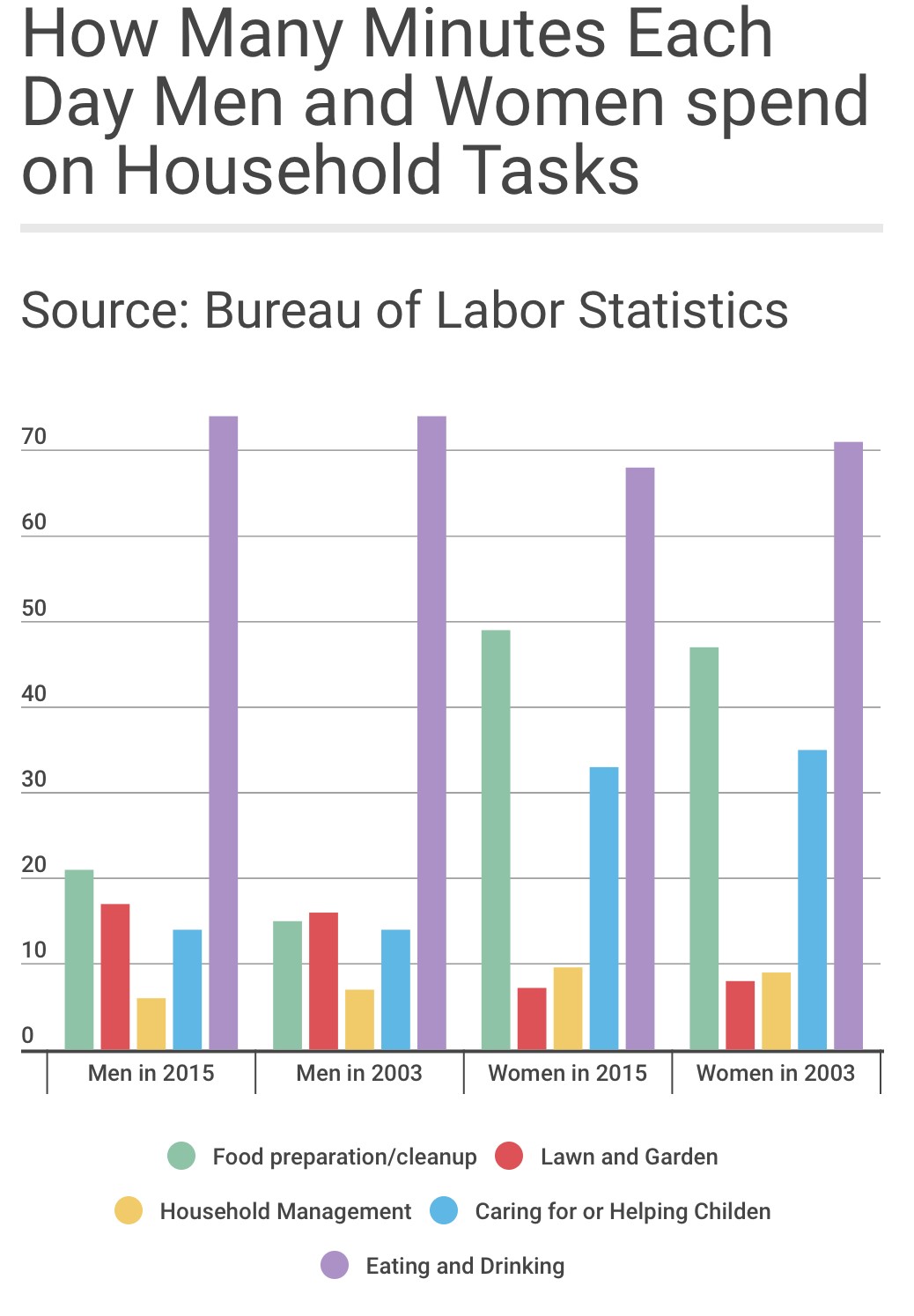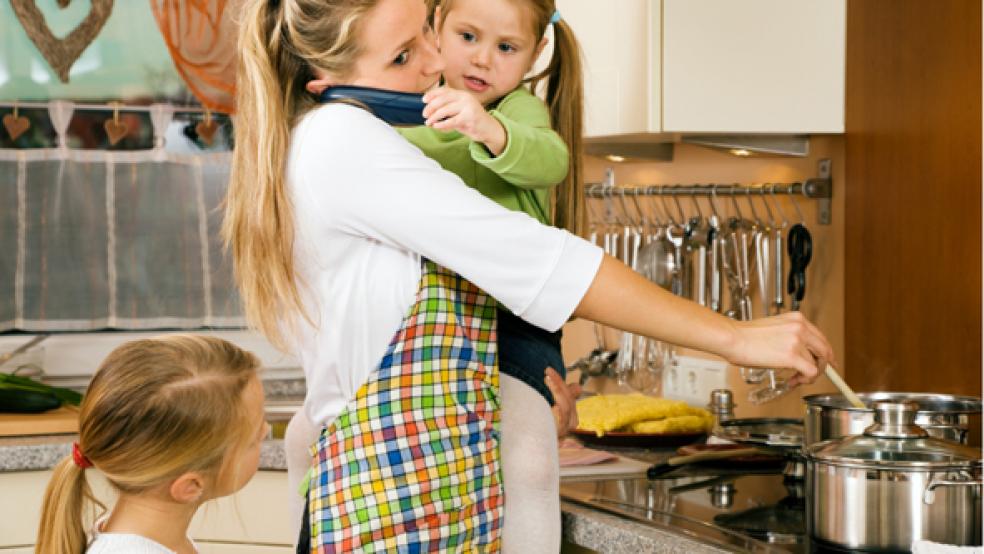In the chore wars that are still raging on in American households, women might be gaining ever so slightly.
The latest release of the American Time Use Survey from the Bureau of Labor Statistics shows that women last year spent 52 minutes a day on housework, down — six whole minutes less! — from 2003.
Yet even though women make up 47 percent of the American labor force, the age-old gender roles of women taking on most of the housework remain firmly in place. Women still do a lot more housework than men, although men are gradually taking on more responsibilities at home.
Related: As Hillary Plays the Woman Card, More Men Are Being Dealt Out
In 2015, only 22 percent of men did chores like laundry or cleaning on an average day, compared to 50 percent of women. But that 28 percentage point gap has narrowed a bit since 2003, when just 20 percent of men did housework every day compared to 54 percent of women.
On average, men spend 1.4 hours a day on household tasks like laundry and cleaning, preparing food, lawn care and gardening or other household management. Women spend 2.2 hours a day on such things.
The proportion of men who prepare food rose from 35 to 43 percent over the last 13 years. But the share of women preparing food actually increased since 2003, with 70 percent of women now preparing food each day, compared to 66 percent in 2003.
In sum, we are still a far cry from bridging the disparity between the amount of housework women do compared to their male counterparts. And just in case you think the battle over housework is much ado about nothing, a study published last week in the Journal of Occupational and Environmental Medicine highlighted some of the stakes, showing a link between working longer hours (including due to housework) and chronic disease risks.
Related: Here’s Why It Takes Women Longer to Pay Off Student Loans
“Regularly working long hours over 32 years was significantly associated with elevated risks of heart disease, non-skin cancer, arthritis, and diabetes,” the study reported. “The observed risk was much larger among women than among men.”
Here’s how men and women compare on how much time they spend on household tasks:





